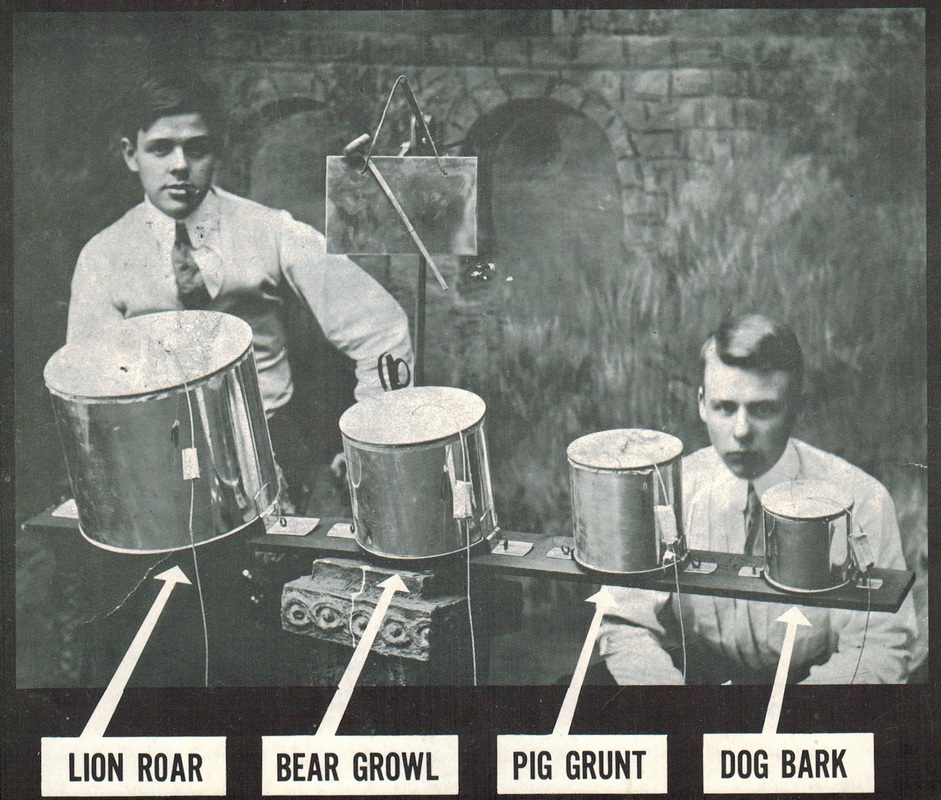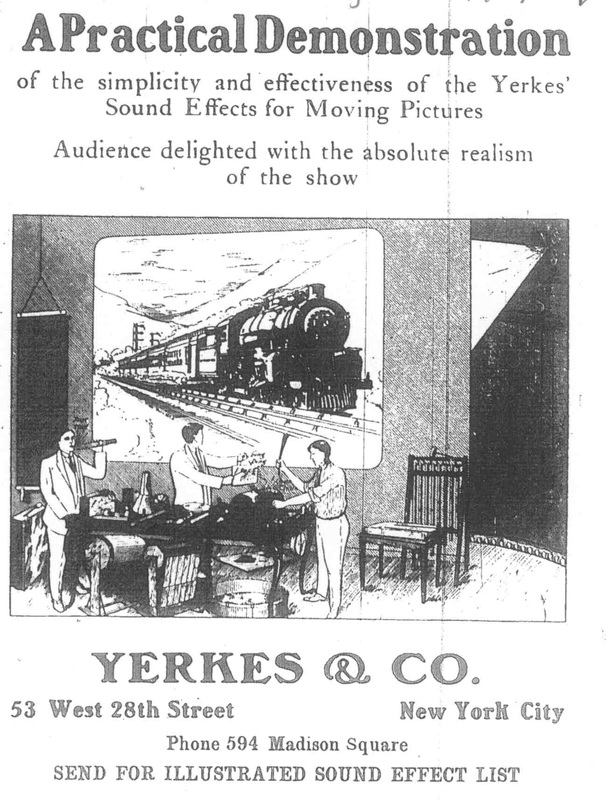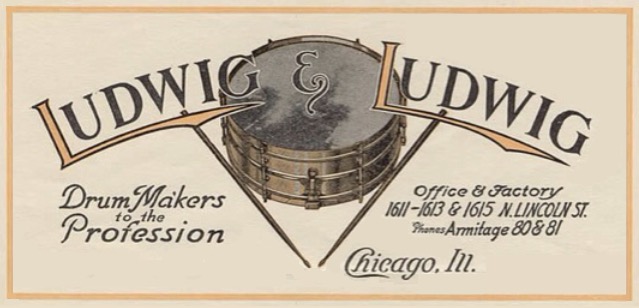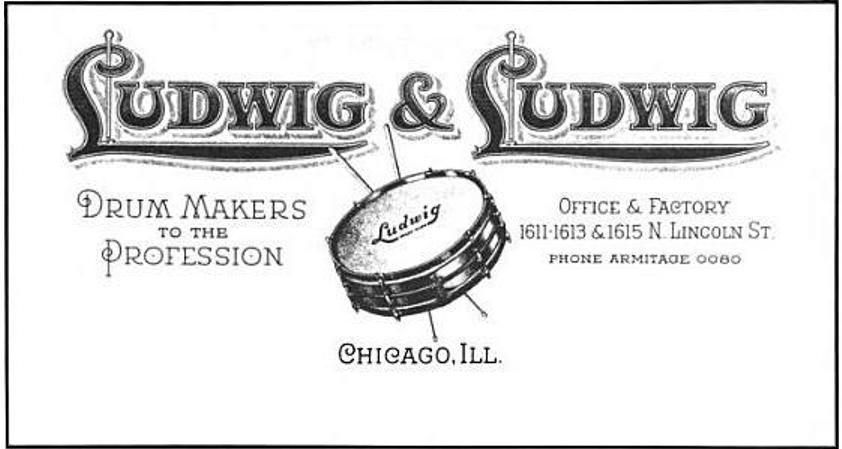|
Percussionist John P. Noonan explains that:
"the trap artist had to match everything: storms, wind, pistol shots--every bit of 'screen business'--and all else was a sacrifice on the altar of realism." -The Instrumentalist, March-April 1951 |
HISTORY
The use of creative sound effect instruments to supplement the public viewing of silent films is a rarely discussed portion of America's music and film history. The following information is presently the best known knowledge on this subject. -Nick White 2015 PERCUSSION It is a well-known fact among percussionists that we are often called upon to play instruments that are not blatantly percussion, but are assigned to us with common sense in regard to our skills. All musicians are accustomed to living in service to the demands of the music we play, however, as time and history progresses music will surely follow. From this, percussion has evolved from humble origins into a colorful and diverse galaxy of instruments and responsibilities. While our instrument is always growing, one would be incorrect to assume that our list of instruments (constantly gaining in numbers) has never had instruments subtracted from it. IN THE BEGINNING At one point in history, percussion players were in great demand to accompany a popular new art form: silent pictures. The Chicago World's Fair in 1893 promised visitors an exhibition of the newest innovations in science and technology. At that point, motion picture cameras and the modest images they produced were perceived as a mere novelty that could never surpass live entertainment. Little did they know, it would soon become a wildly popular and powerful vehicle for communication, mass media, and entertainment. While new technology allowed for clear and realistic moving images by the turn of the century, the first thirty years of mainstream cinema was dominated by silent films. Because the marriage of both film and recorded sound was difficult to synchronize practically, it was common practice to have musical accompaniment. This could range from a single piano player, to piano and sound effects, to (in large theaters) full orchestras behind a screen. It was at this time that percussion players were in the highest demand ever. PURPOSEFULLY MANUFACTURED INSTRUMENTS Around 1905-1910, drum companies began manufacturing sound effects to be used in accompanying motion pictures. While some sound effects such as ratchets and slapsticks were commonly used by percussionists in late 19th century theater and vaudeville, it was the silent film that really allowed these instruments to expand in numbers and become relevant. During this period the number of cinemas was steadily increasing into the thousands--all of which needed percussionists or "trap drummers" to fill the void that technology could not. A common list of "traps" that a percussionist would regularly carry around included: Sleigh-bells Ratchet Self-loading pop gun Sand blocks Thunder-sheet Steamboat whistle Locomotive whistle Ferry boat & ocean liner whistle Snore & sneeze whistles Bell plate Anvil Train imitation Bells (all kinds) Telephone, door, etc. Cuckoo whistle Friction drums (Lion-roar, bear growl, pig grunt and dog bark) Rooster-crow Cow-bawl Hen-cackle Baby-cry Canary whistle Cricket Slapstick Jingle clogs Shot cushion (gunshot) Horse hooves Wind whistle/siren whistle EXTINCTION OF AN INSTRUMENT FAMILY
When the first recorded sound synchronized films or "talkies" were introduced in 1927, the percussion industry took a devastating blow, and thousands of drummers lost work. While in the 1930s sound effects were still used for radio to accompany weekly drama and comedy shows, the number of jobs for trap artists were still significantly less. After the Second World War, drum companies did not continue to produce most sound effects, and the notion of a "trap drummer' became completely obsolete. LIST OF KNOWN TRAPS MAKERS Yerkes Mfg. Co. (New York, NY) Jas. H. Ward Mfg. Co. (Gary, IN) F. E. Dodge Co. Inc. (Boston, MA) Nokes & Nicolai (Boston, MA) Duplex Mfg. Co. (St. Luis, MO) M.J. Kochman/"Truplex"/ "Frisco" (San Francisco, CA) Ludwig & Ludwig (Chicago, IL) Leedy Mfg. Co. (Indianapolis, IN) Walberg & Auge "Perfection", (Worcester, MA) Acme Drummer's Supply (Chicago, IL) Acme (England) Acme (Weehawken, NJ) "20th Century" by Fred Gretch Mfg Co. (Brooklyn, NY) Charles Stone (Chicago, IL) R.H. Stone (Chicago, IL) M.A. Wintrich (Chicago, IL) Barry Drum Co. (Philadelphia, PA) George B. Stone & Son Mfg. Co. (Boston, MA) McIntosh (Boston) Ed. Montray (Allegheny, P.A.)* Wurlitzer (Cincinnati, OH)* MYSTERY BRANDS "XXX" Hawes *No known examples found |




